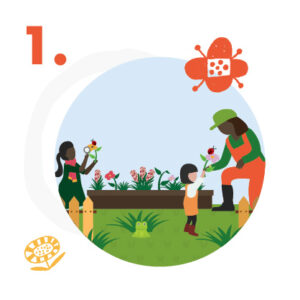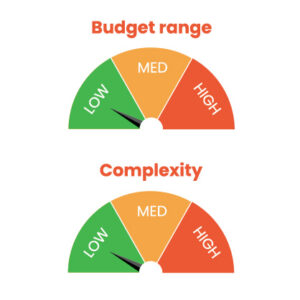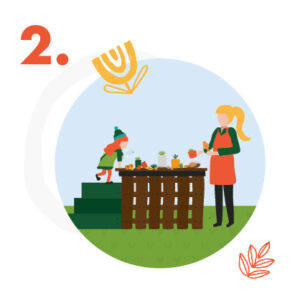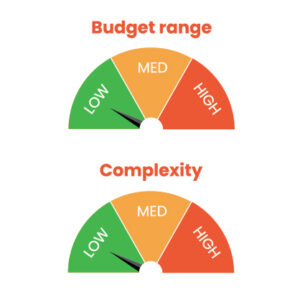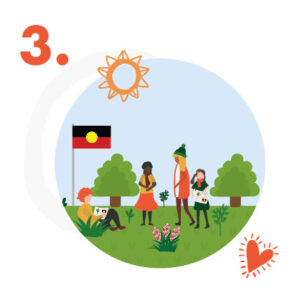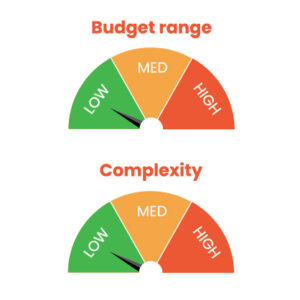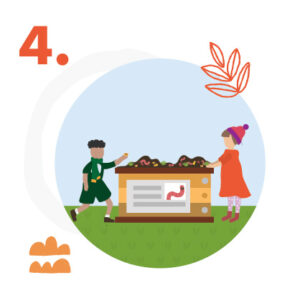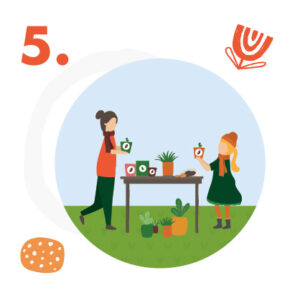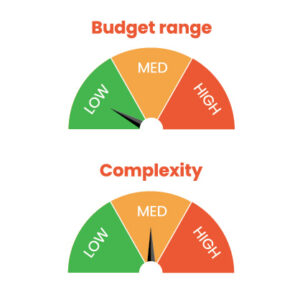
Are you ready to jump into our Junior Landcare activities?
Whether you’ve got a green thumb or you’re dipping your toes into the world of sustainability and nature, they’re sure to bring a splash of fun to your school holidays. We’ve rounded up five super cool activities that’ll have your kiddos exploring the outdoors, getting their hands dirty and discovering the wonders of nature. From getting the most out of food scraps, learning all about our First Nations seasons, and making friends with some wiggly worms, there’s something for everyone.
We’ve included a budget and complexity scale for each activity so you can easily see how much they might cost (some don’t cost a cent!) and how much effort they’ll require. You’ll find links for each activity to step-by-step guides, videos and activity sheets on the Junior Landcare Learning Centre, proudly supported by Woolworths.
Let’s dive in and make some fantastic memories along the way. Happy exploring!
What’s happening in your backyard?
|
|
Embark on your very own nature safari and get outdoors with your young explorers to find and identify animals in the habitats that surrounds us. What can they find? What do they notice about the habitat? Where are the food or water sources?
You can go to a local reserve, a nearby National Park or even your own back garden. Download the activity sheets, and bring along magnifying glasses, pencils, garden trowels, tongs or other props to help you find out more about what’s happening in your habitat. Look up high and dig around down low to see what you uncover. Consider day and nighttime adventures to see different types of animals. Click through to the learning activity to access the activity sheets and find the step-by-step guide and checklist. Additional activity: Add the plants and animals or insects you find to iNaturalist and contribute to citizen science. Citizen science is when everyday people contribute to scientific research. In this case by collecting and contributing what you’ve seen you’re adding to the data available for the area you’re in. Did you know? You won’t find many butterflies and bees in cooler places at this time of year, but you will find them where temperatures are consistently above 18 degrees or so. In colder places you can look through leaf litter to see what bugs are around.
|
Propagating from fruit and vegetable scraps
|
|
Growing food from scraps is a fun activity for kids, teaching them about reusing, plant biology and sustainable living – and getting to watch their food scraps grow into more food is pretty awesome!
Our learning activity includes a great video with Junior Landcare ambassador, Costa Georgiadis, propagating spring onions, but you can also use carrots, avocado pits, leeks, celery and many other fruits and vegetables. All you need is whatever fruit or vegetable you want to use, a cutting board, a kid-friendly knife, water and a container to regrow your plant in. You can also download an activity sheet so your child can make notes on what they’re doing and what they observe when the food is growing. Click through to the learning activity to watch Costa show how to propagate spring onions, download the activity sheet and find lots of links to other great resources about growing food from scraps. Did you know? The leaves on a plant are like solar panels that provide energy for the plant to grow, which is why you need to keep this plant experiment near light.
|
Exploring First Nations seasons
|
|
The idea of four seasons makes sense in the Northern hemisphere, but here in Australia the variety of climatic regions doesn’t neatly fit into spring, summer, autumn and winter. We can look to First Nations people to learn about the seasons where we live, and how to tune into the seasons by looking at what’s happening our environment to the weather, the plants or the wildlife.
Exploring the weather patterns and seasons where you live is a great way of fostering respect for First Nations knowledge and enhancing children’s awareness of the natural environmental cycles and how they can differ from place to place. Check out our learning activity to watch a video with environmental educator and proud Wiradjuri man, Adam Shipp, download an activity sheet and find a step-by-step guide to finding out about your local seasons. This map from the Bureau of Meteorology will help you find the seasonal calendar closest to where you live. Did you know? Ants build the entrances to their nests depending on the weather. They use dark material during the cool weather to absorb the heat and use light material when it is hot to reflect the heat. |
Making a wiggly worm farm
|
|
Worms play a super important role in recycling nutrients. In this activity you will make a worm farm to observe and investigate worms at work. You’ll also collect lots of valuable worm wee which is like a liquid gold that provides nutrients to your garden beds.
Our worm farm activity uses a polystyrene box, which you should be able to get from a local fruit and veg shop. You’ll also need a short section of garden hose or pipe, garden soil and compost, gravel, and of course our wiggly friends! You can find a complete checklist of what you need in our learning activity. Remember to keep your worm farm moist once you’ve built it. This helps our worms absorb oxygen from the air as they breathe with their skin! Check out the learning activity to watch a video with Costa, follow the step-by-step guide, and download an activity sheet to help you learn what food the worms love or loathe. Did you know? Worms have existed for over 600 million years, and they don’t have eyes but can sense light! |
Sow a seed, grow a feed
|
|
You might think that planting seeds where you live at this time of year doesn’t make sense, but there are lots of veggie that love the colder weather, so there’s no need to wait! Check out this fab guide from ABC’s Gardening Australia to see what will grow in your climate zone at this time of year.
Our sow a seed, grow a feed activity makes it really easy for children to make their own little seed pots, plant and care for seeds. Depending on where you live you can keep your seeds inside to care for them until they’re ready to be planted out. Your little gardeners can even download and keep a seed observation journal to help them keep track of their growing journey. Check out our learning activity for a step-by-step guide, checklist of what you’ll need, video tutorial and seed sowing observation journal. Did you know? Most seeds don’t need sunlight to grow. Water, oxygen and warmth are necessary for seeds to germinate into seedlings. |
Activity sheets for indoor days!
The Just for Kids section of our Junior Landcare Learning Centre is PACKED with fun and educational activities to keep young minds and hands busy and engaged.
With word searches, mazes, crosswords, colouring-in sheets, drawing tutorials, quizzes, design activities and more, you’re sure to find something your Junior Landcarers will love. The activity sheets are free to download and based around the four Junior Landcare themes of Biodiversity, Food Production, First Nations Perspectives and Waste Management.
Check out our Just for Kids activities here.
Check out the Junior Landcare Learning Centre, proudly supported by Woolworths, for lots more FREE activities, and follow us on Facebook or Instagram to keep up to date with any new content.
If you have any ideas for new activities, we’d love to hear them! You can email us at juniorlandcare@landcareaustralia.com.au.
Be sure to tag us @juniorlandcare on socials if you’re sharing your little learners having fun!

